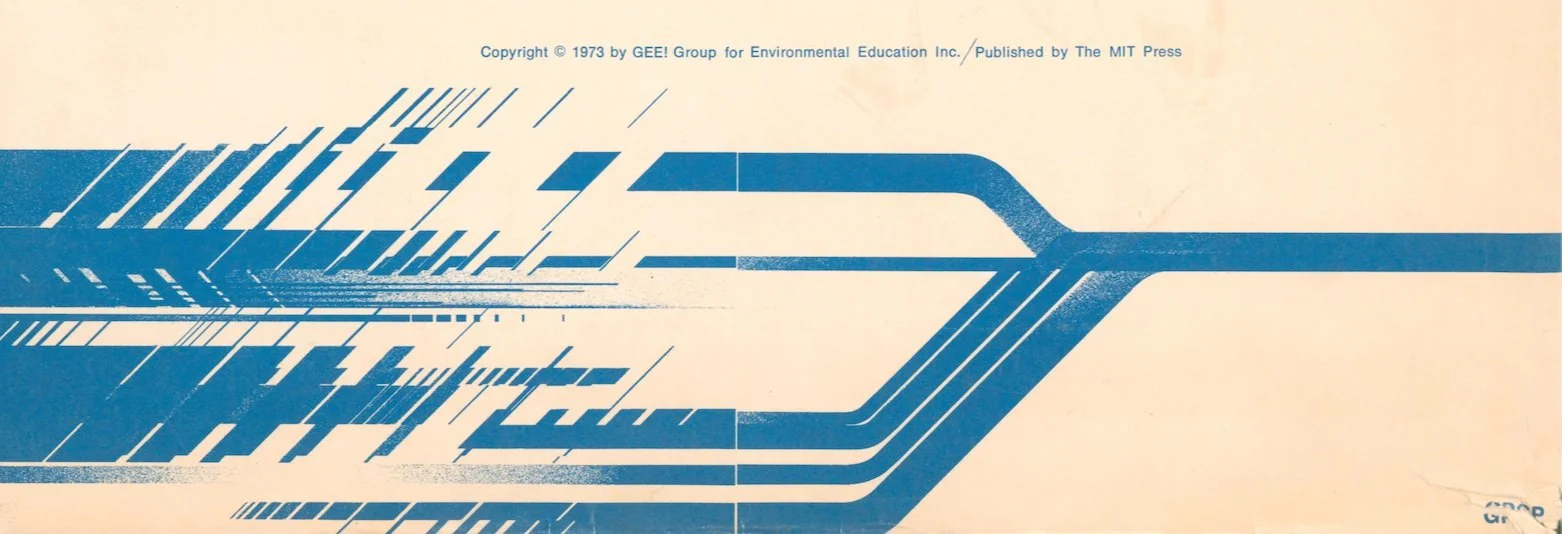Richard Saul Wurman
The Understanding Group draws upon the pioneering efforts of Richard Saul Wurman, affectionately referred to as RSW, and his work in the field of information architecture. Dan Klyn is writing a book, and we want to share some of the interesting things he’s found and learned.
Descriptive Bibliography
The following descriptive bibliography focuses on 5 years in Richard Saul Wurman’s life and work, circa 1969-1974.
Thirteen posters designed by Richard Saul Wurman. Some of these were un-rolled for the first time in 49 years at the scanning vendor.
A total of six posters from the 1980 Monterey and 1984 Technology, Education, & Design (T.E.D.) conferences.
“the most seductive thing for me at this moment in my life is to be asked to do something that I've never done and don't know how to do. And I virtually can't refuse that. I love the high risk and I love the terror of that moment.”
David Ellison shot some photos of books and ephemera for me: flat scans of covers aren’t enough to convey the thingness of these things. Even so, the conclusion I came to after doing this was that I’ll need to work with a prop stylist.
Digital transfer from a cassette tape from Richard Saul Wurman’s archives. RSW was a board member of the Epoch B Foundation, and taped this speech from one of the group’s meetings at the Mohonk Mountain House in the Catskills mountains of New York.
Some artifacts in RSW’s archive from a never-realized project circa 1980 to stage an exhibition around American industrial designers and manufactured goods.
Digital transfer from a cassette tape. Interview by Richard Saul Wurman with Francis Crick on November 16, 1978
In my own experiences with it, curiosity is about patterns. It's one of our most powerful tools for noticing difference in the environment. When human beings detect difference—when we notice that the way things show up for us is different than the pattern we expected—what happens next is patterned, too.
Side A is a talk by Donald Norman at TED5 in 1994. The transcript of which I’ve made and published below.
Side B is a now-legendary talk by Muriel Cooper that was published by MIT recently as part of a symposium in her honor.
What follows is a transcript I typed up from part of a talk Richard Saul Wurman gave in the fall of 1975 at Ball State University.
The title of his talk was Works In Progress, and one of the projects he shared with the audience was the first draft version of what he described as a “keynote fable” - something he was writing for performance at his AIA ‘76 National Convention, which was to be convened in Philadelphia the following spring.
Richard Saul Wurman loves dummies.
He always makes a “binding dummy” when he’s working on a book. I’ve seen him do it a few times now: he calls the print and copy department at Office Max (or wherever), and has them cut and glue a block of blank sheets of paper to his spec. More than once, he had to tell them what he wanted “was like a custom pad of paper” to help them understand what he was asking for.
All of the videos from the first two sessions of TEDMED3, in Charleston circa 2003. Pulled off from the post-event CDROM that was mailed to each attendee.
All of the videos from the Day 2 CDROM that all TED7 attendees were shipped after the conference are now on Dan Klyn’s YouTube channel, with exceptions for copyright claims that blocked certain clips.
Richard Saul Wurman has said to me on many occasions that Peter Bradford is the most under-rated graphic designer in the United States. Folx in the field of IA recognize Bradford’s name from the cover of The Information Architects in 1996, where he’s credited as editor. RSW’s collaboration with Bradford on things around IA goes back to the visual presentation of the 1976 AIA Conference in Philadelphia, of which RSW was chairman.
One of the best days I’ve yet spent working on this project was the 1st day I spent rooting around in Mr. Wurman’s garage. I found so many things that are helping me tell RSW’s story, including this promotional CD-ROM from Que Publishing.
I conducted an email interview with graphic design legend Milton Glaser today, who served on the boards of IDCA and AIGA with RSW.
This is the intro to a 7-hour video documenting the 1990 2nd TED conference published by Voyager. Most notable are some of the earliest clips of people trying VR for the first time. As you'll see, the equipment looks similar to what we have today although the graphic resolution was much lower.
What a treat to see RSW signing copies of UnderstandingUnderstanding, his .. for now let’s say it’s his 100th book. This was the first (and only) physical retail location for acquiring copies of “Understanding Understanding”
I first heard RSW say the phrase If I Don’t Ask, I Won’t Get as part of his explanation for how it came to be that he’s able to do so much dope shit. Richard says this was how his father operated: by this motto. RS Wurman learned from ML Wurman that there’s always a better table at the restaurant. Always a better room at the hotel. And that is up to me to come up with the confidence to ask for what I want.
Dan Klyn talks about the work of Richard Saul Wurman at the 2014 GIANT conference.
Video
Watch Richard Saul Wurman & Dan Klyn at the 2014 TEDxGrandRapids
Book
Order a copy of RSW’s out-of-print book Understanding Understanding



Everybody knows that Richard Saul Wurman coined the term information architecture in 1975. What few people know, and nobody else seems to be working on, are the histories and stories and artifacts from the path he traveled to get there.